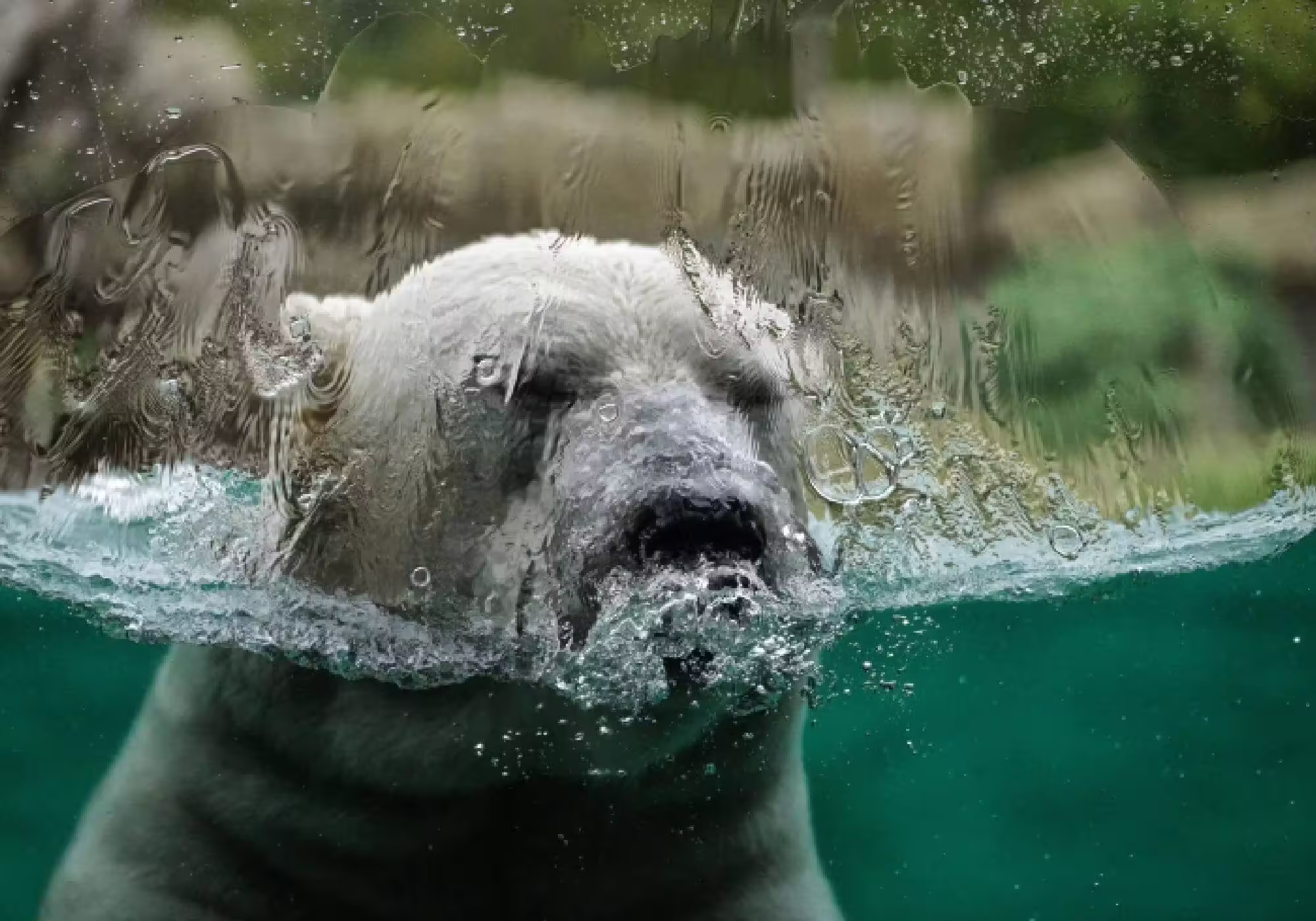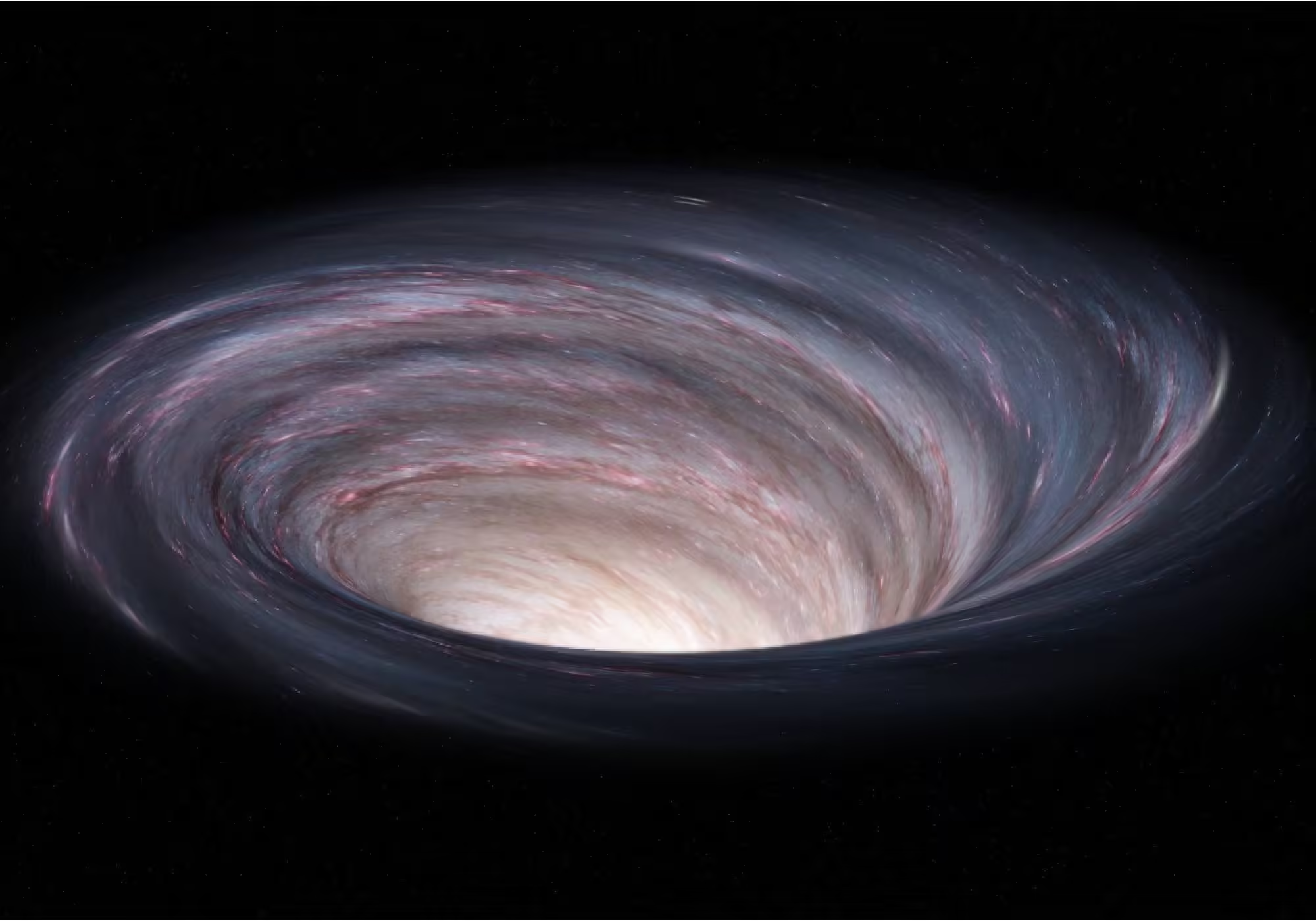Black holes are famous for trapping everything in their path, including light. But there is another mystery associated with them, the black hole information paradox. This paradox asks an important question: what happens to information about objects swallowed by a black hole? Does it disappear forever, or can it somehow escape? According to physics, information should never be lost, but black holes seem to challenge this idea. Scientists have been struggling with this challenge for years. Stephen Hawking further fueled this debate by introducing a new idea, Hawking radiation. The universe does not allow information to be lost—Stephen Hawking His words continue to resonate in modern physics, and fuel the debate over whether information can truly be lost in a black hole. What is Hawking Radiation? In 1974, Stephen Hawking found that black holes are not completely black. They actually emit low-energy radiations, now known as Hawking radiation. This radiation slowly carries mass away from the black hole, causing it to evaporate over time. Quantum effects near the event horizon, the boundary of the black hole, are responsible for this process. However, the main issue is that Hawking radiation doesn’t carry any information about the matter the black hole swallows. What is Paradox? The black hole information paradox is more than a thought experiment. It directly challenges the basic tenets of physics. If black holes erase information, this idea conflicts with quantum mechanics, which insists that information must be preserved. This paradox sparks ongoing debate, forcing scientists to rethink their understanding of how the universe works. Ideas to Solve the Paradox Scientists have proposed several solutions to this paradox: Recent Developments in Theoretical Physics Recent advances in quantum gravity and research have reignited the debate over the black hole information paradox. Scientists now think that Hawking radiation may contain information, challenging the earlier belief that it is information-free. The Page curve is central to this new idea. It explains how information can be preserved even when a black hole evaporates rather than disappears. When Hawking radiation causes a black hole to shrink, some lost information may actually escape through the radiation itself. This suggests that the paradox can be resolved without breaking the rules of quantum mechanics. Although these ideas are promising, they rely on quantum gravity, a theory we still don’t fully understand. Still, these findings give hope that we can one day resolve the paradox and unify our understanding of the universe. Challenges in Detecting Hawking Radiation Even though Hawking radiation is a theoretical breakthrough, it has proven to be extremely difficult to detect. The radiation emitted by black holes is incredibly weak, making it nearly impossible to observe with current technology. The temperature of the radiation is so low that it is even colder than the cosmic microwave background, the heat left over from the Big Bang, which masks the faint signals. Physicists face a major challenge in gathering observational evidence to support Hawking’s theory. Without direct evidence, it is difficult to confirm whether the information paradox can indeed be resolved by Hawking radiation. Despite these challenges, ongoing advances in technology and astronomical observation techniques may eventually help detect this elusive radiation. Conclusion The black hole information paradox still confuses physicists, and solving it could change the way we view the universe. Hawking radiation gives us a clue, but there is still a lot we don’t understand. As technology advances, and we learn more about quantum gravity, we may eventually figure out how black holes work at their core. Future studies could answer some of the biggest questions in physics. This will help us better understand both quantum mechanics and general relativity. Solving the black hole information paradox will likely remain a main focus of scientific research for many years. FAQs Q1: What is the black hole information paradox?This is a strange thought about the information paradox of black holes: information about anything that falls into a black hole disappears and distorts our knowledge of physics. It’s like throwing a book into a fire and wondering if the story inside is lost forever! Q2: What is Hawking radiation?Hawking radiation is the shooting out of tiny bits of energy from a black hole, as if it were leaking particles. This is a great idea in the first place because it suggests that black holes could slowly shrink and disappear completely. Q3: Can Hawking radiation explain the paradox?This concept, known as Hawking radiation, involves black holes slowly emitting energy and losing their mass. Some scientists believe that this will lead to all the information trapped in black holes being released back into the universe in the future. Q4: Why is this paradox important?Paradoxes are essential in that they break us out of our usual ways of thinking, help us find new perspectives, and deepen our understanding of complex concepts. This stimulates curiosity and sharpens critical thinking skills. References
Role of Organic Chemistry in Drug Design and Pharmaceuticals
Organic chemistry is crucial in drug discovery, allowing scientists to create and modify molecules for targeted therapies. It enhances drug effectiveness, reduces side effects, and ensures safe delivery. With advancements in molecular structure and stereochemistry, organic chemistry improves cancer treatments and further personalizes medicine, significantly impacting healthcare advancements.
Global Warming Effects on Animals: Survival Threats, Risks, and Solutions
Global warming affects the ecosystem in such a way that the survival of wildlife can be threatened. As the temperature rises, it changes habits, migratory corridors, food sources, and many other things. Only by knowing how global warming effects on animals can we save healthy ecosystems as well as biodiversity. If nothing is done soon, most of the species will be lost. This post will explain in detail such critical effects as well as survival rates, habitat destruction, invasive species, displacement of migration patterns, health issues, and even the threat of extinction. Survival Rates and Reproduction in Wildlife Ecosystems As global temperatures rise, wildlife ecosystems face severe disruption. Warmer climates alter plant bloom patterns, reducing the food supply for herbivores and their predators. These climate changes also alter reproductive cycles, making it harder for some species to adapt. Take sea turtles, for example. Their sex is determined by temperature. With rising temperatures, more female babies are born, threatening future population balance. Similarly, some bird species are laying eggs earlier. This timing mismatch with their food supply reduces their chances of successful reproduction. As a result, many species face a decline in survival rates, pushing them closer to extinction. The main reasons for this global impact on animals are as follows: 1. Climate Change Climate change is rapidly destroying and breaking up habitats. As temperatures rise, many animals are forced to move to cooler places. However, human development often gets in their way. Forests, wetlands, and coastal areas are rapidly disappearing. As a result, animals are being pushed into smaller, less habitable spaces. 2. Natural Disasters Natural disasters such as wildfires, floods, and droughts are destroying habitats at an alarming rate. The fires caused by the extreme heat in Australia in 2020 burned millions of acres of land. Nearly 3 billion animals were either killed or displaced. Many species lost their homes and food sources, leaving them more vulnerable to predators and other environmental threats. As these disasters become more intense, ecosystems are struggling to recover, causing long-term damage. 3. Fragmented habitats Fragmented habitats make it harder for animals to find food, water, and shelter. As a result, most animals struggle to survive, leading to increased mortality rates. Many species are now restricted to small areas of land. This restriction limits genetic diversity and puts populations at risk of extinction. Dynamics of Invasive Species in a Warming World As global temperatures rise, ecosystems become more attractive to invasive species. These invaders can disrupt the balance of native wildlife. Invasive species often thrive in new environments and compete with native species for food and other resources. For example, brown trout have moved into areas where brook trout once lived. Warmer water temperatures have facilitated this spread, causing a decline in native brook trout populations. This invasion disrupts the natural food chain and harms the balance of the ecosystem, making it difficult for native species to survive. Additionally, invasive species can introduce new diseases, which put further pressure on local wildlife. The spread of these invasive species is a growing threat due to climate change. As ecosystems try to adapt, the presence of these invaders accelerates the decline of already vulnerable native species. Disrupted Food Chains and Resource Availability Many animals rely on migration to find food, breeding grounds, or better climates. However, global warming is changing weather patterns, which, in turn, alters migration routes and timing. These changes can seriously affect species that depend on precise timing to survive. For example, migratory birds are adjusting their routes and schedules because spring is arriving earlier and food is becoming less available. As a result, some birds reach their breeding grounds too early, before enough food is available to support themselves and they are young. In other cases, birds lose the best conditions for breeding altogether, leading to population declines. Additionally, these shifts in migration patterns impact other species in the ecosystem. When a species does not arrive as expected, it disrupts the food chain and can throw the entire ecosystem out of balance. This disruption often leads to a significant loss of biodiversity. Health Risks for Wildlife in a Changing Climate Climate change is posing a serious threat to the health of wildlife. As temperatures rise, the range of different pathogens, parasites, and diseases also expands. Warmer conditions enable disease vectors such as ticks and mosquitoes to invade new areas, exposing animal populations that lack immunity to these emerging threats. A prime example of this is the spread of the chytrid fungus, which thrives in warm, wet environments and has wreaked havoc on amphibian populations globally. The fungus causes a deadly disease called chytridiomycosis, which is responsible for the decline or extinction of many frog and salamander species. Additionally, rising temperatures increase the likelihood of disease spread, as animals experience stress from changing conditions, which in turn weakens their immune systems. Many species are declining due to increased disease transmission and deteriorating animal health. If no action is taken, these health risks will increase as the planet warms. Extinction Risks Global warming is driving many species towards extinction. Rising temperatures could lead to many more species becoming extinct by the end of this century if we don’t take action. Other factors contributing to this crisis include habitat loss, changes in breeding and migration patterns, invasion of non-native species, and health issues among wildlife. For example, polar bears are already at a disadvantage because the ice they depend on is melting. This reduction in ice limits their ability to hunt seals, their main source of food. Additionally, amphibians are highly sensitive to environmental changes and face even greater risks. Many species may not survive if these trends continue. To address this issue, we must act as quickly as possible to reduce the rate of global warming. This includes protecting and preserving vulnerable species by restoring their habitat and cutting carbon emissions. By taking these steps, we can help ensure a future for wildlife and our planet in the future. Ecosystem Services at Stake
How Black Holes Are Born in the Cosmic Abyss
Black holes are one of the most intriguing and mysterious entities in the universe. Their gravitational force is so strong that even light cannot escape from them. But what causes these cosmic giants to form? This article explores the exciting journey of how black holes are born, telling you about the life cycle of a star, its destruction and the birth of a black hole as a result of collapse. Star Life and Death Life begins, so to speak, inside the heart of a massive star. Stars like our Sun sustain their lives by burning fuel through nuclear fusion. This process produces, in addition to light and heat, an outward thrust that opposes the inward pull of gravity. But what happens when a star runs out of fuel? As soon as the star runs out of nuclear fuel, gravity begins to take over. After which a very dramatic collapse occurs. If the star is much larger than the Sun, this will result in a very dramatic collapse, leading to a supernova explosion. In stars massive enough, the core will expand past the point of no return and form a black hole. The Birth of a Black Hole A black hole is born when such a massive star can no longer withstand its own gravity. After a supernova, the core of that star collapses in on itself. However, all that mass is compressed into a tiny volume. In between, there is then an infinite density, called a singularity. This throws out the outer layers of the star in its final stage. In turn, the core falls deeper and becomes a black hole. It is so powerful that it distorts space and time around it. What we know as the point beyond which nothing can survive is called the event horizon. The Event Horizon The boundary between a black hole and the rest of the universe is called the event horizon. Here, anything and light can go there and remain stuck for eternity. The gravitational force here is so strong that it distorts the fabric of space-time. From a distance, a black hole seems to be an empty black; however, when observed up close, it is the universe that consumes everything that comes its way. Black holes are consumers of stars; influencing and shaping the parent galaxies and star formation, in addition to the evolution of the entire universe. Types of Black Holes Black holes come in different sizes and types, and each is formed through specific processes. 1. Stellar Black Holes These black holes are formed by the collapse of stars, and their mass is usually 10 to 20 times the mass of the Sun. 2. Supermassive Black Holes These are giant bodies located at the center of galaxies. Their weight would be millions to billions of times more than the Sun. Scientists believe that giant black holes formed very early in the universe, and they gained most of their mass by swallowing gas, dust, or other black holes. 3. Intermediate Black Holes They are not well understood, but their size ranges between stellar and supermassive black holes. 4. Primordial Black Holes The hypothetical black holes that may have formed in the early universe are much smaller, yet equally mysterious. How We Detect Black Holes Although black holes appear invisible, it has been possible for astronomers to discover them by monitoring the motion of things around them. In this way, the black hole’s high gravity sucks in gas and stars, where the friction caused by the heat will force them to emit X-rays. Using instruments such as the NASA Chandra X-ray Observatory and the European Space Agency’s XMM-Newton, scientists can detect emissions from black holes to try to learn about them in space. Observations of gravitational waves, which are ripples in space-time that are produced when two black holes collide, have been used as a second method. This revolutionizes our view of such phenomena, as it is direct evidence of the existence of black holes. Future Research on Black Holes The exploration of black holes continues. Scientists are constantly expanding our understanding, seeking answers to some of the most important questions. What happens to information that falls into a black hole? This question, known as the black hole information paradox, is one of the biggest mysteries in modern physics. Researchers are also eager to explore the connection between black holes and quantum mechanics. Could black holes be the key to unifying the forces of nature? Advanced observatories such as the James Webb Space Telescope are expected to reveal more secrets about black holes in the coming years, giving us even more information about these mysterious giants. FAQ Section 1. How big can a black hole get? Black holes come in different sizes. Stellar black holes have a mass between 10 and 20 times that of the Sun. Supermassive black holes, on the other hand, have a mass that is millions to billions of times greater. 2. Are black holes a threat to Earth? No, the nearest known black hole is located thousands of light-years away and poses no threat to Earth. 3. Can anything escape a black hole? No, once a body crosses the event horizon, it is trapped forever. In fact, abstract concepts such as “Hawking radiation” also suggest that black holes lose mass over time. References




